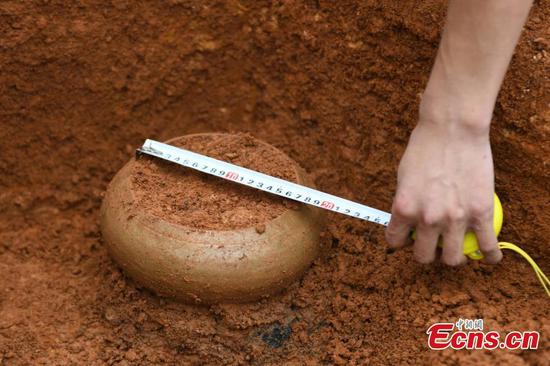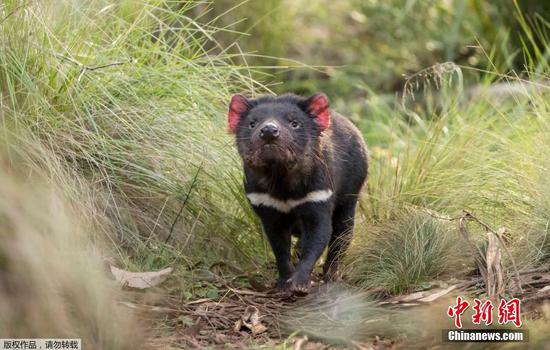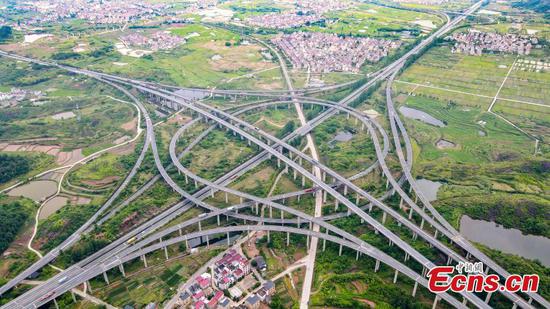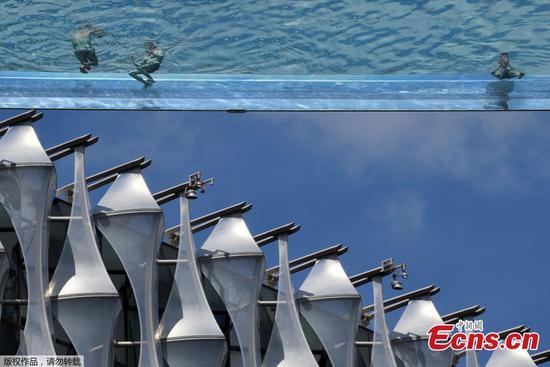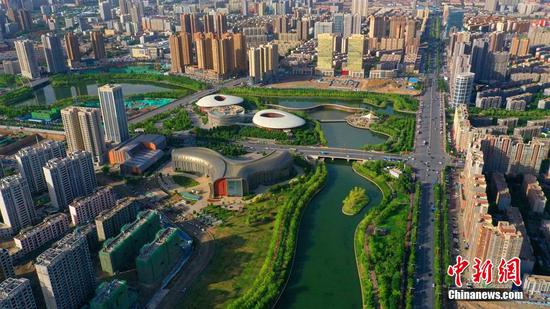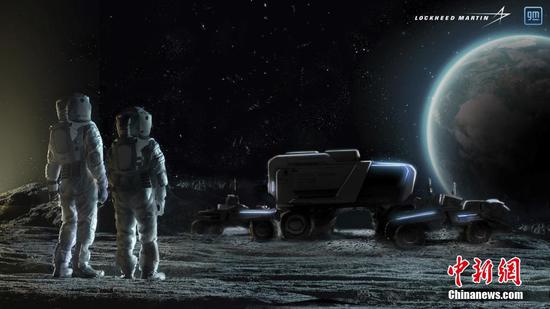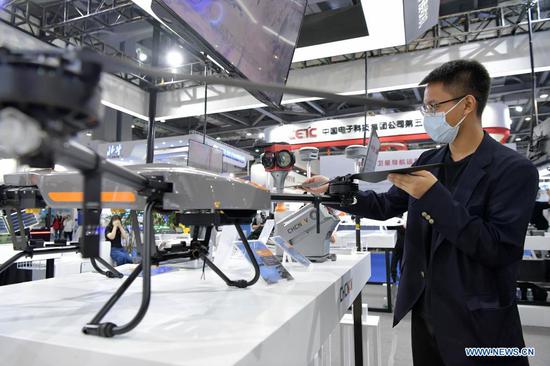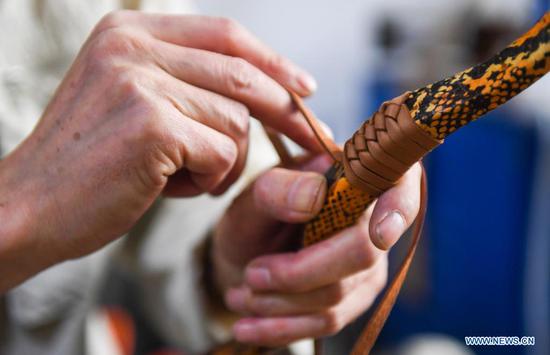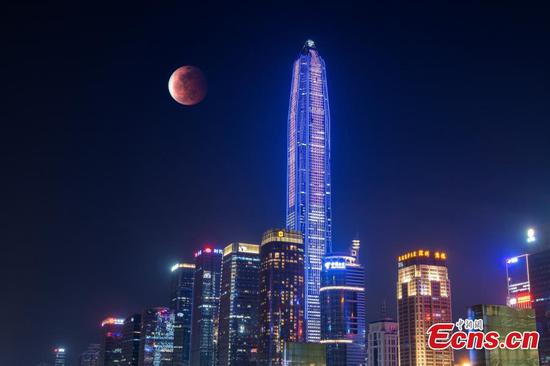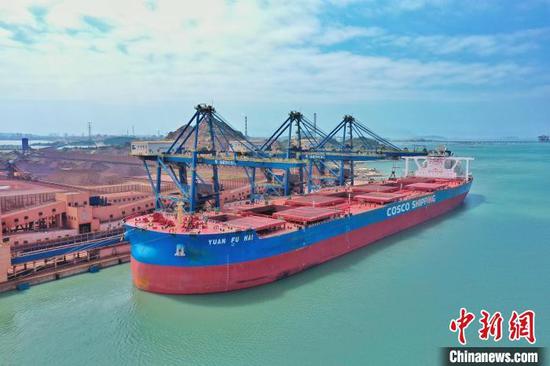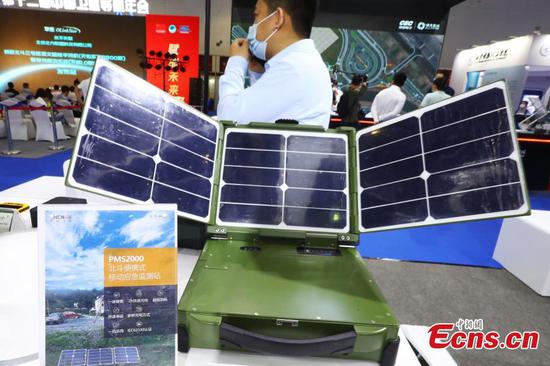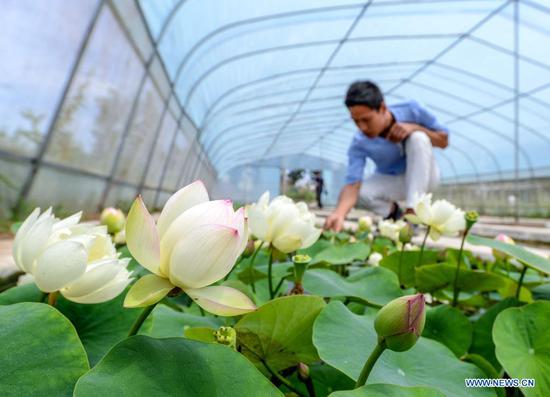
Tianzhou 2, a robotic cargo ship, blasts off on a Long March 7 carrier rocket at the Wenchang Space Launch Centerin in Hainan, on May 29, 2021. [Photo by Tu Haichao/for chinadaily.com.cn]
Tianzhou 2, a robotic cargo ship launched on Saturday evening, docked with Tianhe — the recently deployed core module of the country's permanent space station — early on Sunday morning, according to the China Manned Space Agency.
The cargo ship flew with a Long March 7 carrier rocket that blasted off at 8:55 pm at a coastal launchpad at the Wenchang Space Launch Center in the southernmost island province of Hainan.
After a 10-minute flight atop the 53-meter rocket, the craft entered a low-Earth orbit, unfolded its solar panels and then began to execute the rapid autonomous rendezvous and docking procedures that lasted about eight hours, the agency said in a statement.
Tianzhou 2 successfully docked with Tianhe's rear hatch at 5:01 am. Next, it is programmed to conduct autonomous refueling operations and carry out some tests on equipment, according to the statement.
When astronauts from the Shenzhou XII spacecraft board on Tianhe, they will move living materials and mission payloads from Tianzhou 2 to the core module.

Tianzhou 2, a robotic cargo ship, blasts off on a Long March 7 carrier rocket at the Wenchang Space Launch Centerin in Hainan, on May 29, 2021. [Photo by Guo Wenbin/for chinadaily.com.cn]
Tianhe, or Harmony of Heavens, was lifted by a Long March 5B heavy-lift rocket at the Wenchang launch center on April 29. It is the first part of the Chinese space station, named Tiangong, or Heavenly Palace.
Before docking with Tianzhou 2, Tianhe had carried out a series of tests to verify its designs for rendezvous and docking maneuvers, astronaut accommodation as well as experimental equipment.
Hao Chun, director of the manned space agency, said previously that the Shenzhou XII spacecraft, carrying three men, will launch and dock with Tianhe early next month. The crew will stay in the module for three months.
Tianzhou 2's launch was originally scheduled for the early morning of May 20, but mission commanders decided to postpone the launch shortly before the predetermined ignition time because a technical problem on the rocket was detected.
Over the past 10 days, engineers and technicians from the China Academy of Launch Vehicle Technology, which designed and built the rocket, raced against time to pinpoint and solve the problem, according to the academy.

Tianzhou 2, a robotic cargo ship, blasts off on a Long March 7 carrier rocket at the Wenchang Space Launch Centerin in Hainan, on May 29, 2021. [Photo by Tu Haichao/for chinadaily.com.cn]
A Tianzhou cargo spaceship consists of two parts — a cargo cabin and a propulsion section. It is 10.6 meters long and has a diameter of 3.35 meters. With a liftoff weight of 13.5 metric tons, the craft is able to transport up to 6.9 metric tons of supplies to the space station, according to Bai Mingsheng, Tianzhou's chief designer at the China Academy of Space Technology.
With a designed life of more than 1 year, Tianzhou 2, the country's second cargo spaceship, is carrying 6.8 tons of supplies including 2 tons of propellants, more than 160 packages of living and experiment materials and two 100-kilogram extravehicular suits for astronauts to perform activities outside the core module.
During its linkup with Tianhe, the cargo ship will also hold scientific experiments and technology demonstration operations, according to Bai.
The designer said that when Tianzhou 2 departs from Tianhe, it will carry wastes from the module and burn up during the atmospheric reentry.
Hao from the manned space agency said the Tianzhou 3 cargo ship will be launched in September to dock with Tianhe. The next month, another three-astronaut team will fly to the core module on Shenzhou XIII to stay there for six months.

Tianzhou 2, a robotic cargo ship, blasts off on a Long March 7 carrier rocket at the Wenchang Space Launch Centerin in Hainan, on May 29, 2021. [Photo/Xinhua]
Two large space labs will be launched next year to connect with the module. 2022 will also see two manned missions and two robotic cargo flights to continue construction of the space station, which is scheduled to be completed around the end of next year.
China's most adventurous space endeavor, Tiangong will consist of three main components — a core module attached to two space labs — with a combined weight of nearly 70 metric tons. The entire station is set to work for about 15 years, mission planners have said.
Tianzhou 2's predecessor, Tianzhou 1, was China's biggest spacecraft when it entered service and was launched at the Wenchang launch center in April 2017.
It carried out several docking and in-orbit refueling maneuvers with a Chinese space laboratory in a low-Earth orbit from April to September that year, making China the third nation capable of in-orbit refueling, after the former Soviet Union and the United States.

Tianzhou 2, a robotic cargo ship, blasts off on a Long March 7 carrier rocket at the Wenchang Space Launch Centerin in Hainan, on May 29, 2021. [Photo/Xinhua]

Tianzhou 2, a robotic cargo ship, blasts off on a Long March 7 carrier rocket at the Wenchang Space Launch Centerin in Hainan, on May 29, 2021. [Photo/Xinhua]

Tianzhou 2, a robotic cargo ship, blasts off on a Long March 7 carrier rocket at the Wenchang Space Launch Centerin in Hainan, on May 29, 2021. [Photo/Xinhua]

Tianzhou 2, a robotic cargo ship, blasts off on a Long March 7 carrier rocket at the Wenchang Space Launch Centerin in Hainan, on May 29, 2021. [Photo/Xinhua]

Tianzhou 2, a robotic cargo ship, blasts off on a Long March 7 carrier rocket at the Wenchang Space Launch Centerin in Hainan, on May 29, 2021. [Photo/Xinhua]

Tianzhou 2, a robotic cargo ship, blasts off on a Long March 7 carrier rocket at the Wenchang Space Launch Centerin in Hainan, on May 29, 2021. [Photo/Xinhua]









